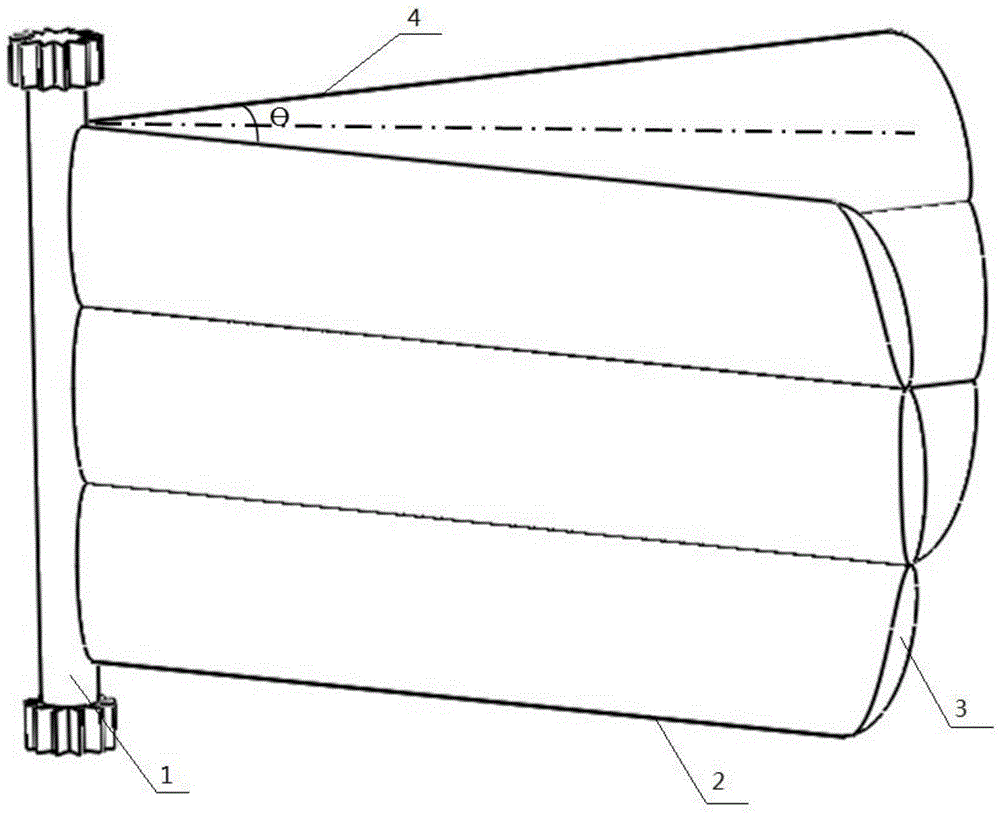Laterally-split bionic two-tailed paddle unit
A technology of horizontal opening and tail rotor, which is applied to the oars of ships. It can solve the problems of propeller turbulence, high speed and high complexity, and achieve the effect of low hydrodynamic noise, low mechanical noise and high propulsion efficiency
- Summary
- Abstract
- Description
- Claims
- Application Information
AI Technical Summary
Problems solved by technology
Method used
Image
Examples
Embodiment Construction
[0021] The present invention is described in more detail below in conjunction with accompanying drawing example:
[0022] combine Figure 1-8 , the present invention is composed of two sub-paddles, respectively the first sub-paddle 2 and the second sub-paddle 4, the relative positions of the two are fixed, and the angle θ is kept at 60 to 90 degrees, so as to figure 1 The dotted line is the axis of symmetry distributed on both sides of the main shaft 1, and each sub-paddle is equipped with a number of paddles 3 in parallel, which are connected to the main shaft 1 through the paddle shaft 6. The top of the paddle shaft 6 is a gear structure, which is connected to the main shaft 1 The tooth structure is connected to realize the free rotation of the paddle from 0 degrees to 90 degrees. Both ends of the main shaft 1 are of gear structure, connected with the hull 5, and swing reciprocatingly under the drive of the hydraulic transmission system in the hull 5. The main shaft and ea...
PUM
 Login to View More
Login to View More Abstract
Description
Claims
Application Information
 Login to View More
Login to View More - R&D
- Intellectual Property
- Life Sciences
- Materials
- Tech Scout
- Unparalleled Data Quality
- Higher Quality Content
- 60% Fewer Hallucinations
Browse by: Latest US Patents, China's latest patents, Technical Efficacy Thesaurus, Application Domain, Technology Topic, Popular Technical Reports.
© 2025 PatSnap. All rights reserved.Legal|Privacy policy|Modern Slavery Act Transparency Statement|Sitemap|About US| Contact US: help@patsnap.com



